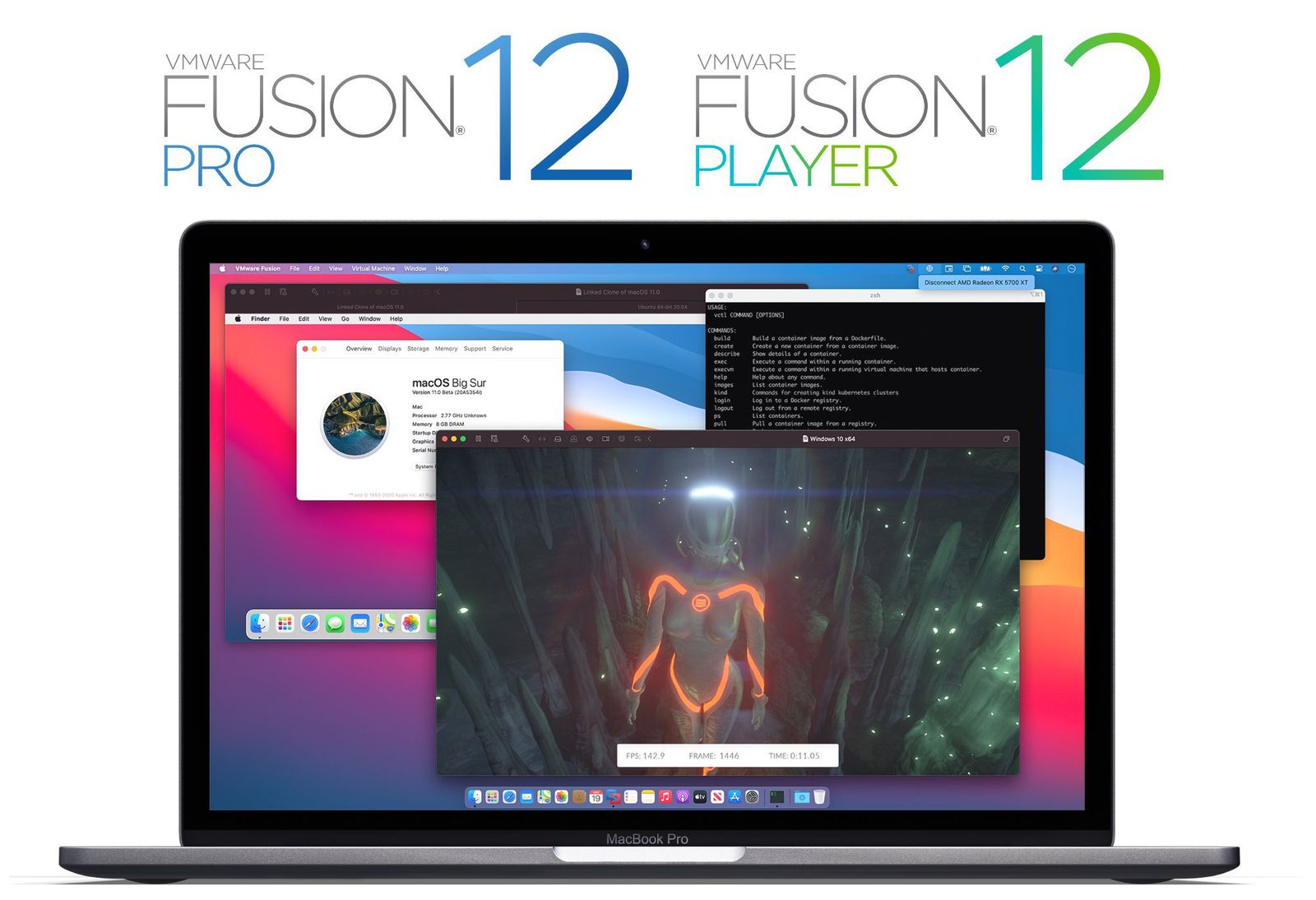
- Move vmware fusion mac osx windows 10#
- Move vmware fusion mac osx pro#
- Move vmware fusion mac osx code#
- Move vmware fusion mac osx mac#
Well, our initial assessments are going very well! For starters, we have VMs booting in a variety of Arm operating systems, and we are very impressed with the performance!īecause of our kinship with ESXi, we have a major architectural advantage over our competition. This is a much different task that simply shipping a single product like Fusion to say the least! So, how’s it going?
Move vmware fusion mac osx code#
To support Fusion on M1 devices, while maintaining code and feature compatibility with our ecosystem, we are essentially bringing the core of these two projects together. Being able to build on top of what we’ve learned with our still-evolving Fling has been crucial, and thankfully we have some overlap in the teams’ history, meaning folks have exactly the right experience needed for this project.
Move vmware fusion mac osx mac#
So when we learned about the M1 devices, we knew we had the in-house expertise on both the Arm team, and also on the Fusion bench, to set in motion a plan to re-invent our Mac desktop hypervisor to support this incredible new platform. Delivering ESXi for Arm has been a multi-year effort, and yet it’s still not quite a Product like ESXi on x86 currently is. Now, we’re no stranger to Arm CPUs, having shipped what is currently a something we call a Fling with ESXi Arm Edition. This is super important to us and to our customers, particularly as more and more operational workflows become automated. Developers and Operations teams can move VMs and templates between data centers, desktops, and clouds with ease. A VMware VM behaves pretty much the same regardless of what product it’s running on. One of the benefits our users appreciate of having older “enterprise-grade” siblings with Workstation on the desktop and ESXi in the data center is that it gives organizations a consistent operating model. As a side project, this small group were able to essentially rebuild Workstation to run on the Mac using Apple’s UI, thus creating the foundation of what we now know as VMware Fusion With the 2006 transition, a tiny (but incredible!) team of engineers at VMware saw an opportunity.
Move vmware fusion mac osx pro#
With the new architecture comes incredible performance gains, thermal improvements, and dramatically improved battery life, but poses some unique challenges for virtualization apps like Fusion Pro and Player. With the introduction of Apple silicon, it was revealed that the new CPU line would be based on the same Arm CPU architecture found in an iPhone or on an iPad as opposed to the x86 or x86_64 Intel (or AMD) architectures found on desktops and notebooks. There are challenges there which will require Apple to work with us to resolve. macOS VMs are not in scope in the short term.
Move vmware fusion mac osx windows 10#



Development is moving along very well, meeting or exceeding our expectations, but there are challenges and much work still to do.We will be delivering a Tech Preview of VMware Fusion for macOS on Apple silicon this year.The quick readīefore we get right into it, I just want to summarize our position way up front with a quick tl dr: It’s been a few months since our informal announcement via Twitter back in November where we committed to delivering VMware VMs on Apple silicon devices, so we wanted to take this opportunity to share a bit about how our progress with our little project to bring Fusion to life on Apple silicon Macs this year.


 0 kommentar(er)
0 kommentar(er)
